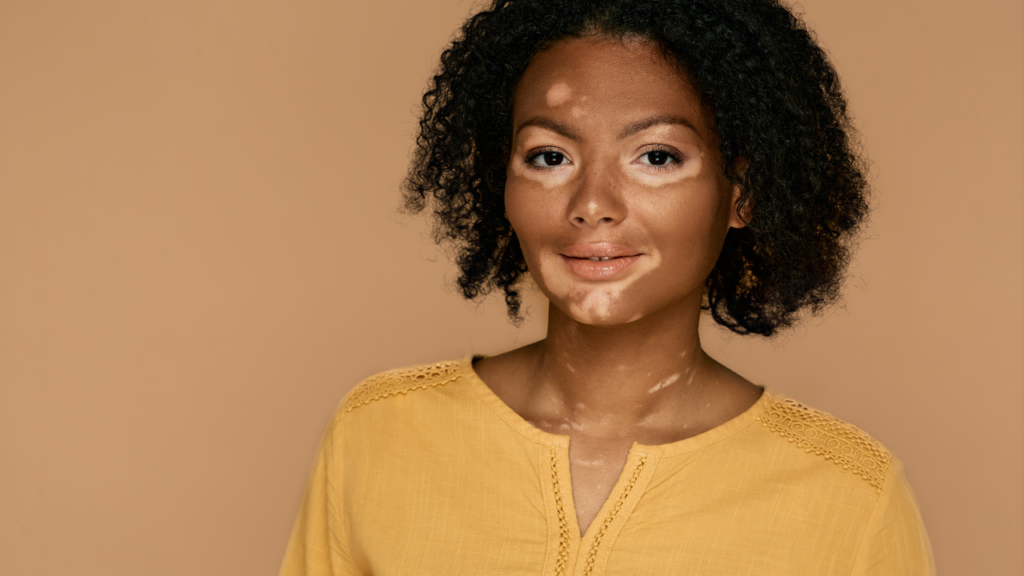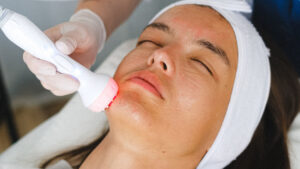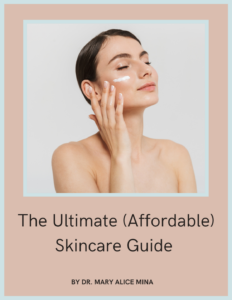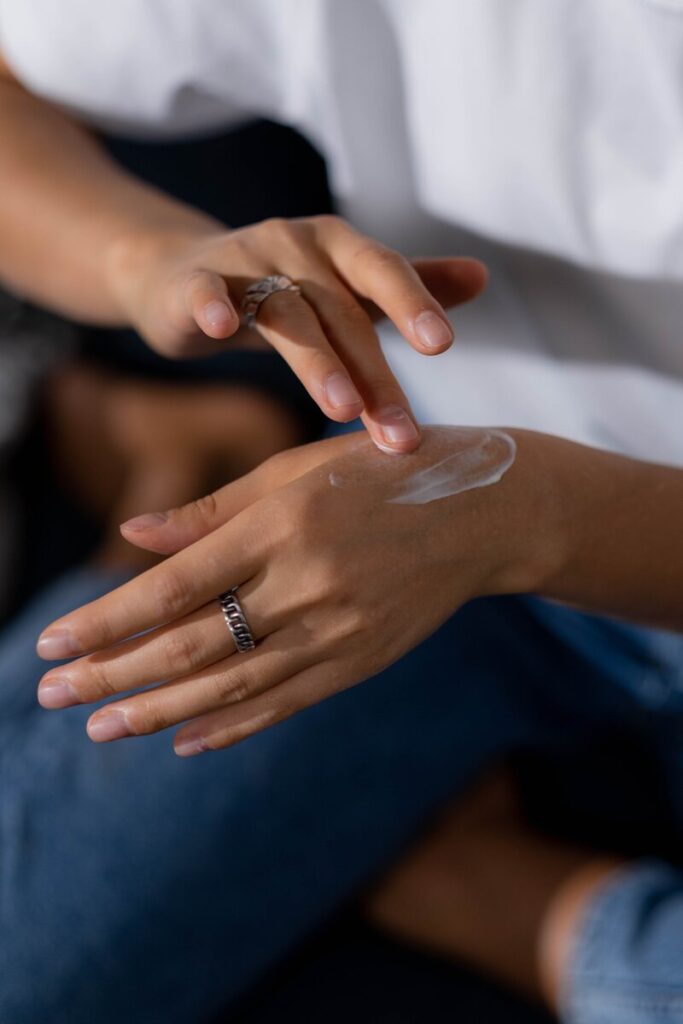Have you ever seen someone with light, even white patches on their skin and wondered what was causing it? This my friends, is vitiligo, a chronic, autoimmune skin condition that affects approximately 1% of people worldwide. And while it targets the skin and causes loss of pigmentation, it can also deeply impact those living with it well beyond the skin! For those living with vitiligo, the journey can come with its challenges, but it also brings valuable lessons about strength, self-acceptance, and the importance of community. Let’s break down the essentials of vitiligo, from its physical and emotional impacts to the power of advocacy and support in making a real difference!
What is Vitiligo?
Vitiligo is an autoimmune condition that leads to the loss of skin pigment, creating white patches on different areas of the body. This happens when the immune system mistakenly attacks melanocytes, the cells that give our skin its color. Many people think vitiligo only affects those with darker skin, but it can occur in people of all races, ages, and genders. The difference is that on lighter skin, the patches may be less noticeable at first, while on darker skin tones, the contrast is much more visible. It can also cause hair to turn white in areas where color is lost, especially in people who have both vitiligo and conditions like alopecia, where hair may fall out and then grow back white.
The Journey with Vitiligo
Just like with so many chronic skin conditions, each person’s experience with vitiligo is unique. Some people just have a few small patches, while others have more widespread depigmentation. A big part of the journey for a lot of people is dealing with the stares and comments from others. It can be tough, but many choose to see those moments as a chance to educate people.The resilience they develop really becomes a core part of their story, and it can inspire others who are facing similar challenges. It’s amazing how something so difficult can also bring about strength and connection!
Treatment Options and Limitations
While there’s no cure for vitiligo, there are several treatments that can help manage it. These treatments range from topical therapies to calm down the immune system as well as oral medications, and even phototherapy, especially narrowband UVB light therapy. These treatments can help slow down the loss of skin depigmentation and even help restore pigment for some people. However, they often need a lot of time and effort, and results can vary, especially for those with widespread areas.
Some people choose other options, like depigmenting the remaining skin to create a more even appearance. This choice is very personal and can be a big decision for those who wish to consider it.
If you have vitiligo, protecting your skin from the sun is especially important. In the areas where skin has lost its color, there’s no melanin, which usually helps shield against UV rays. Without this protection, those spots are more likely to burn and could even have a higher risk of skin cancer over time. Wearing hats, long sleeves, and seeking shade are great habits to keep those sensitive areas safe from too much sun exposure!
The Psychological Impact of Vitiligo
While vitiligo doesn’t cause physical pain, it can have a strong emotional impact. The condition affects how people see themselves, and how they are viewed by others. Many people with vitiligo may feel a loss of identity, especially if their skin color was an important part of their culture and identify.
Support from family and friends is very important for good mental health. Talking openly and advocating for awareness can change feelings of loneliness into a sense of empowerment. Support groups for vitiligo, both online and in person, offer spaces to share stories, challenges, and successes, helping people feel understood and supported.
The Role of Advocacy and Representation
Representation is important for people with vitiligo. Celebrities like model Winnie Harlow have shown that beauty is diverse and doesn’t conform to traditional standards. When people with vitiligo see others thriving and fully embracing their appearance, it can be a powerful reminder that beauty comes in many forms.
Community events and support groups also help people with vitiligo connect, share their experiences, and celebrate their unique stories. World Vitiligo Day, celebrated every June, raises awareness and brings people together from around the world. This advocacy not only supports those with vitiligo but also teaches the wider public that being different doesn’t mean being less valuable. Other powerful online communities include the Vitiligo Research Foundation (VRF) vrfoundation.org and the Global Vitiligo Foundation (GVF) globalvitiligofoundation.org
Life with Vitiligo
Living with vitiligo doesn’t mean you have to hide or feel ashamed. With support from friends, family, and others who understand, people can grow, gain confidence, and even celebrate their unique skin. For those who have just received a diagnosis or are struggling with self-acceptance, the journey may feel overwhelming at first. But many find strength and pride in their differences, reminding themselves—and others—that they are more than their skin and appearance!
Vitiligo may change how someone looks, but it doesn’t change who they are inside. By accepting themselves, people with vitiligo can live openly and beautifully, just as they are. This journey can turn challenges into successes, allowing them to shine in their own special way!
Tune into this week’s podcast as LaTrese Coyt talks about living with vitiligo, the treatments she’s tried, and how she found confidence again. She also shares advice for others dealing with vitiligo. A powerful and honest conversation you won’t want to miss!
Find LaTrese here:
https://www.instagram.com/ldarsellwrites/
A new podcast episode drops every Monday!
For more great skin care tips, subscribe to The Skin Real Podcast.










